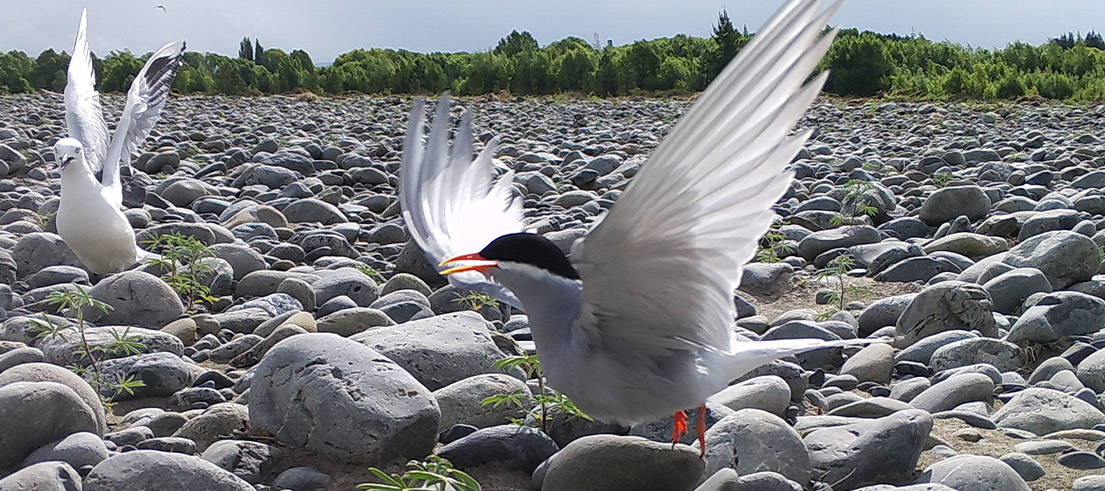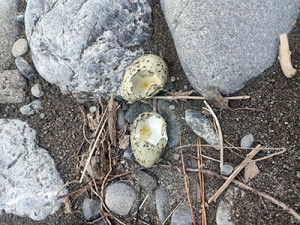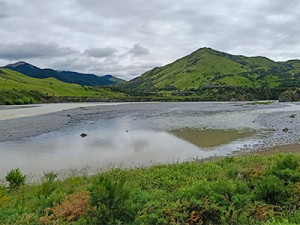
Hurunui and Waiau Uwha Rivers project looks to the future
A project to protect and enhance braided river bird habitat on the Hurunui and Waiau Uwha Rivers is entering its sixth year.
Funding has now been secured for the second phase of the project on the rivers, enabling the important work to continue.
It comes after a successful five-years protecting braided river bird habitat.
Project background
In 2017, the previous Hurunui Waiau Uwha Zone Committee biodiversity working group endorsed prioritising funding and resource to help protect black-fronted tern and black-billed gull habitat - both threatened, endemic Canterbury birds.
The previous committee worked with braided river experts, rūnanga and community who identified key values, threats and gaps for braided river biodiversity management around the two rivers.
A strategic approach to addressing the multitude of threats facing our braided riverbed birds was needed, to ensure alignment and collaboration of efforts between landowners, groups and organisations involved in supporting them.
Collaborative effort sees continued funding
Initially, around $40,000 per year in biodiversity funding allowed trapping, weed control and monitoring at both rivers, for the last five years.
Focus has been on protecting braided river bird nests and monitoring success rates of these nests, to see which methods of protection are working. The Department of Conservation (DOC) has contributed a significant amount of resource to support this project, through monitoring and weed control.
Environment Canterbury, the Hurunui District Council and rūnanga have recently endorsed an additional $50,000 of funding to continue supporting the programme next season. Staff are currently working on the funding agreement and project implementation with DOC.
Findings show trapping supports nest protection

Two black-fronted tern eggs after being preyed on.
Our biodiversity officer Zipporah Ploeg said the learnings gained through the last five years work/mahi is helping shape the future of the project in a way that will better protect the braided river birds.
"We went from knowing very little about the unique braided river ecosystems in these rivers, to now having a better picture," she said. Zipporah said there was an assumption Southern Black-Backed Gulls were one of the major predators around these rivers, as they are known to be in others.
Southern Black-Backed Gulls were initially the focus of control efforts as they are known as a significant predator of breeding braided river birds.
"However, we didn't record any predation incident involving them over the last five years, despite their high population in the area," she said.
It is likely Southern Black-Backed Gulls target newly fledged chicks and what we were seeing was eggs and adult birds in the non-treatment areas being eaten by mustelids, cats, rats and hedgehogs before the chicks had a chance to hatch.
High-intensity trapping around one enhanced island was found to support higher success rates for braided river bird breeding, so the project team re-focused their efforts on this method
Next steps

Sharkstooth Island on the Waiau Uwha River
"We are now looking at what we can do with all this knowledge we have about the management of these rivers," Zipporah said.
Zipporah is encouraging others to get on board and support the project too.
"We are seeking funders, partnerships and collaborations with any interested landowners, community groups, or agencies to build on what we have done and ensure that all braided river habitat and biodiversity values on the rivers are protected and maintained for future generations," she said.
"We are aiming to undertake further predator and weed control this coming season as a bridging year, before officially getting stuck into phase two," she said.
The focus for stage two is likely to be around the future management of two key islands - NIWA Island on the Hurunui River and Sharkstooth Island on the Waiau Uwha River.
She said actions would include enhancing both islands by ensuring deep channels on both sides, clearing vegetation, putting a ring of steel around them, undertaking aerial predator control as needed and feasible, and monitoring the breeding outcomes of the birds.
